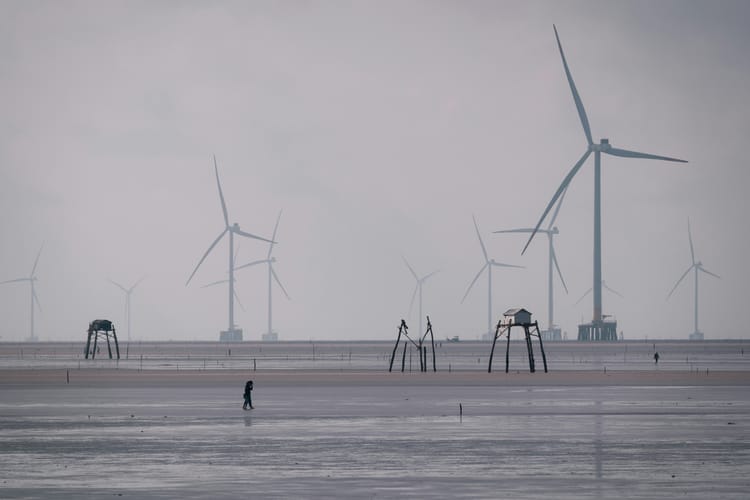COP28 groups call for $10 trillion of renewable energy investment amid historic wind losses

The president of COP28 and renewable energy groups today called for a tripling of renewable energy capacity by 2030, but despite the appetite of Chief Sustainability Officers for “100% renewable” energy, the investment needed may be too much to ask for a wind sector facing historic losses.
The report was published today during a pre-COP28 event in Abu Dhabi by COP28 President Sultan Al Jaber, the International Renewable Energy Agency (IRENA), and the Global Renewables Alliance (GRA). It calls on governments and the private sector to increase global renewable energy capacity to at least 11,000 GW in order to meet the Paris Agreement’s 1.5ºC scenario.
To achieve that would require US$10 trillion of investment – including almost US$3 trillion in solar PV and more than US$4 trillion in wind power development. This may be too much to ask of renewable companies, which have suffered from rising costs and policy uncertainty.
Wind sector woes
The wind sector in particular is facing historic losses. Denmark’s Orsted is facing potential losses of 12 billion kroner (€1.6 billion) this quarter – its worst quarter since 2015. The company is blaming increasing costs and rising interest rates for its financial woes.
Meanwhile, Siemens Energy’s shares plummeted last week after it emerged that it was seeking €15 billion worth of government guarantees. The company could see losses of US$5 billion because of faults in its latest onshore wind turbine model.
Last week, the European Commission stepped in with a European Wind Power Action Plan meant to ensure that the clean energy transition “goes hand-in-hand with industrial competitiveness”.
Immediate actions include accelerating permitting, improving auction design and cracking down on unfair trade practices by non-EU competitors. More importantly, the Commission aims to facilitate wind companies’ access to EU financing, particularly through the EU-ETS funded Innovation Fund. Under the plan, the European Investment Bank will also make de-risking guarantees available.
Solar firms are faring slightly better, but most are delivering lower-than expected profits. Just last week, Enphase energy reported a 13% year-on-year revenue decrease, citing rising costs and a drop in demand.
Renewable capacity outlook
This dampened financial performance could affect companies’ ability to keep building new renewable capacity, despite the massive increases needed to meet climate targets. Already, Orsted warned that its ability to build its offshore Sunrise Wind power project in New York was likely to be “extremely challenged” if it could not pass on some of the increased costs to consumers.
According to the COP28 report, installed solar PV and wind capacity needs to rise to 5,400 GW and 3,500 GW respectively by 2030. Solar generation currently stands at 1,055 GW, while wind reached 899 GW in 2022.
Commenting on the release, IRENA Director-General Francesco La Camera said: “Our mission is as clear as it is urgent: We need concerted action to triple renewable power capacity by 2030. This includes urgently addressing deeply entrenched systemic barriers across infrastructure, policy and institutional capacities stemming from the fossil-fuel era. IRENA’s World Energy Transitions Outlook, which provides the analytical foundation of this report, warns that the energy transition is dangerously off-track, demanding immediate, radical collective action. This report outlines actions governments must prioritise to fast-track the global energy transition and keep 1.5 °C alive.”
Pressure to accelerate the energy transition is mounting in the run-up to COP28 in Dubai this December. Last week, companies worth US$1 trillion called for a phase-out of fossil fuels.







Member discussion